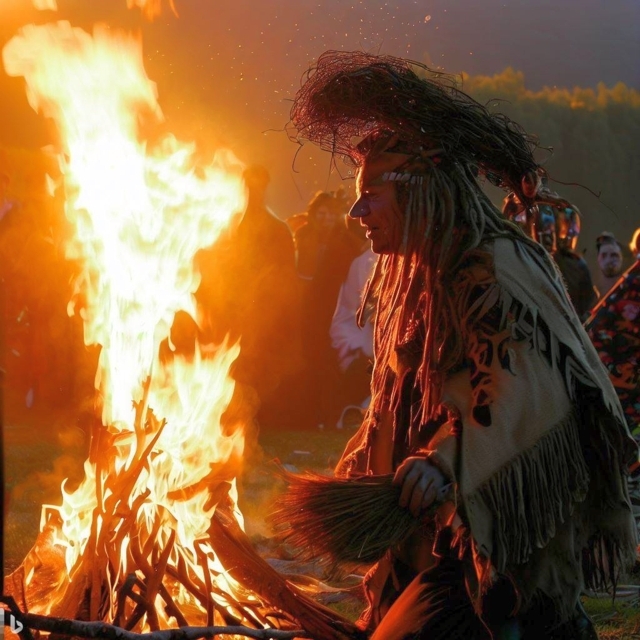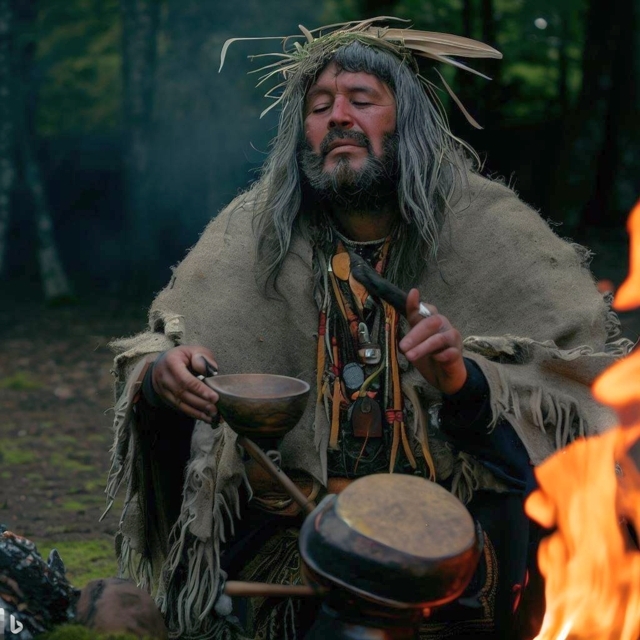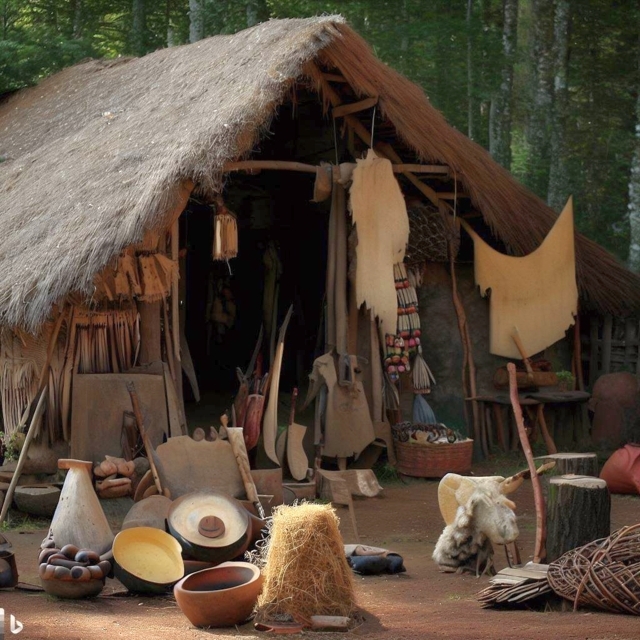Nestled between the Andes mountains and the Pacific coast of southern Chile lives the Mapuche people. Numbering around 1.5 million, the Mapuche are the largest indigenous group in Chile and have a rich cultural history spanning over 5,000 years. Their ancestral lands, known as the Araucanía region, remain home to approximately 20% of the Mapuche population today. This scenic territory of lakes, volcanoes, and forests has fostered a deep spiritual connection between the Mapuche and nature. Let’s explore some key aspects of traditional Mapuche culture and society.
Spiritual Beliefs
At the heart of Mapuche spirituality is a profoundly ecological worldview. They worship a supreme deity called Ngenechen, who rules over four parts of the universe associated with the cardinal directions. Shamans known as machi mediate between the spiritual and earthly realms using herbs, prayer, and divination. Central to the Mapuche’s worldview is the concept of balance between opposite forces to maintain cosmic order. Their main celebrations mark the solstices, equinoxes, and harvests, aligning human activities with the natural cycles.
Social Structure
The foundation of traditional Mapuche society is the extended family unit. Children are highly valued and great emphasis is placed on teaching them strong cultural values. Boys learn survival skills like hunting, fishing, and warfare, while girls are trained in weaving, cooking, and homemaking. Respect for elders is instilled from a young age, and extended families typically live together in one large ruka.
Gender roles are well defined, with men responsible for heavy outdoor labour and politics, while women manage the household, raise children, and transmit oral traditions. However, women hold significant influence in shaping community views and advising their husbands. Both genders participate in storytelling, music, and ceremonies around the hearth each evening. At the community level, several rukas grouped together form a lof, or village, governed by a lonko, or chief. The lonko is highly respected for his wisdom, integrity, and communication skills. He guides the community based on the advice of tribal elders and the laws of the admapu, the Mapuche’s ethical code.
Subsistence and Economy
Subsistence farming forms the bedrock of the rural Mapuche economy. The main crops are corn, potatoes, beans, squash and quinoa, cultivated using simple tools. Livestock farming of sheep, cows, and chickens provides dairy, meat, wool, and eggs. Beyond agriculture, the Mapuche practice hunting, fishing, gathering wild fruits and mushrooms, and domestic crafts like weaving and pottery. Traditional clothing is handmade from wool, linen or cotton, featuring vibrant designs that identify the different communities.
Resistance against Spanish Control
At its peak before the arrival of the Spanish in the 1500s, the Mapuche nation covered over 9.5 million hectares between the Itata and Tolten Rivers. When the Spanish tried to conquer their lands in 1541, the Mapuche united under Chief Lautaro and mounted fierce resistance. Using guerrilla warfare tactics and intimate knowledge of the terrain, they achieved major victories against the conquistadors in the 1550s. After Lautaro’s death, his successor Caupolicán continued to lead the struggle until he was captured and executed by the Spanish. For over 300 years after that, the Mapuche managed to maintain their independence and repeatedly repel Spanish incursions into Araucanía. However, they finally succumbed to Chilean occupation in a series of campaigns from 1861-1885. The Mapuche continued to face loss of lands, discrimination, and suppression of their culture into the 20th century.
Legacy and Heritage
Today, the Chilean government recognises the Mapuche as an indigenous people with certain collective rights. However, land disputes and cultural preservation issues remain ongoing challenges. While globalisation and urban migration have led to assimilation of Mapuche youth, traditional customs and beliefs persist, especially in rural communities. There is also a growing resurgence of Mapuche identity and pride amongst the younger generation. The restoration of ancestral lands, language revitalisation programs, and rediscovery of old agricultural methods and crafts offer hope that Mapuche heritage will endure. Their intimate bond with nature and strong sense of community provides valuable lessons in how we might live in greater harmony with each other and the earth. The Araucanía region remains a fascinating window into Chile’s first peoples, whose culture heroically persevered against tremendous upheaval. We can continue protecting this heritage through respectful study and celebration of their ecological wisdom and vibrant traditions. There is still so much to learn from the enduring Mapuche way of life.
References
– Crow, J. (2013). The Mapuche in Modern Chile: A Cultural History. University Press of Florida.
– Richards, P. (2010). The Mapuche in Post-Dictatorship Chile. Peace Review 22(3),312-319.
Tags
Divi Meetup 2019, San Francisco
Related Articles
Unappreciated Greatness
Life and Legacy of Jahangir of the Mughal Empire. Jahangir ruled over one of the largest empires in human history during his lifetime, yet few people outside of South Asia have heard of him. I aim to shed light on the life and legacy of this remarkable figure,...
The Plague Doctor’s Diary
A Personal Account of the Turin Epidemic of 1656. I am writing this diary to record my experiences and observations as a plague doctor in Turin, the capital of the Duchy of Savoy, during the terrible epidemic that has afflicted this city and its surroundings since the...
The Timeless Beauty of Bustan
Unveiling the Secrets of Saadi Shirazi's Masterpiece.In the realm of Persian literature, few works have captured the essence of love, spirituality, and morality quite like Bustan (The Orchard) by Saadi Shirazi. This 13th-century masterpiece has left a lasting impact...
Stay Up to Date With The Latest News & Updates
Explore
Browse your topics of interest using our keyword list.
Join Our Newsletter
Sign-up to get an overview of our recent articles handpicked by our editors.
Follow Us
Follow our social media accounts to get instant notifications about our newly published articles.









